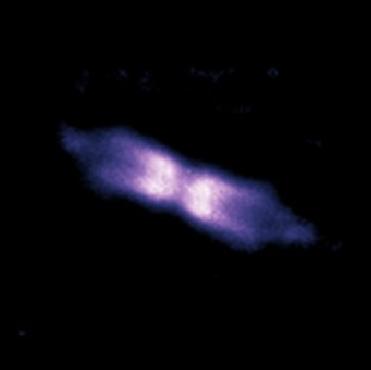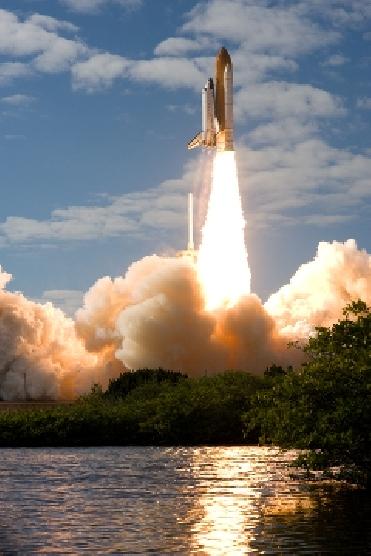
Using the NACO adaptive optics instrument on ESO's Very Large Telescope, astronomers looked at a bipolar shell ejected by a
PARIS (BNS): A ‘vampire star’, located about 25 000 light-years from the Sun in the constellation of Puppis, could be a potential candidate for one of the long-sought progenitors of exploding stars known as Type Ia supernovae, critical for studying dark energy.
Astronomers, using ESO’s Very Large Telescope, have obtained very sharp images of a nova – V445 Puppis – over a time span of two years.
The nova had exploded in November 2000 “after gulping down part of its companion’s matter” and becoming 250 times brighter than before and ejecting a large quantity of matter into space.
It is the first and so far only nova showing no evidence of hydrogen. The object provides the first evidence for an outburst on the surface of a white dwarf dominated by helium.
“This is critical, as we know that Type Ia supernovae lack hydrogen and the companion star in V445 Pup fits this nicely by also lacking hydrogen, instead dumping mainly helium gas onto the white dwarf,” said Danny Steeghs, co-author of a paper reporting the findings.
The images obtained by the researchers show a bipolar shell, initially with a very narrow waist, with lobes on each side. Two knots are also seen at both the extreme ends of the shell, which appear to move at about 30 million kilometres per hour. The shell – unlike any previously observed for a nova – is itself moving at about 24 million kilometres per hour. A thick disc of dust, which must have been produced during the last outburst, obscures the two central stars, ESO said.
The new images have enabled astronomers determine the distance and intrinsic brightness of the outbursting object which is about 10,000 times brighter than our Sun.
A supernova is one way that a star can end its life, exploding in a display of grandiose fireworks. One family of supernovae, called Type Ia supernovae, are of particular interest in cosmology as they can be used as “standard candles” to measure distances in the Universe and hence, can be used to calibrate the accelerating expansion that is driven by dark energy.
One defining trait of Type Ia supernovae is lack of hydrogen in their spectrum. Yet hydrogen is the most common chemical element in the Universe. Such supernovae most likely arise in systems composed of two stars, one of them being the end product of the life of sun-like stars, or white dwarfs.
When such white dwarf ‘cannibalises’ its prey, matter accumulates on its surface. If this layer becomes too dense, it becomes unstable and erupts as a nova.
 Previous Article
Previous Article Next Article
Next Article












The Indian Air Force, in its flight trials evaluation report submitted before the Defence Ministry l..
view articleAn insight into the Medium Multi-Role Combat Aircraft competition...
view articleSky enthusiasts can now spot the International Space Station (ISS) commanded by Indian-American astr..
view article